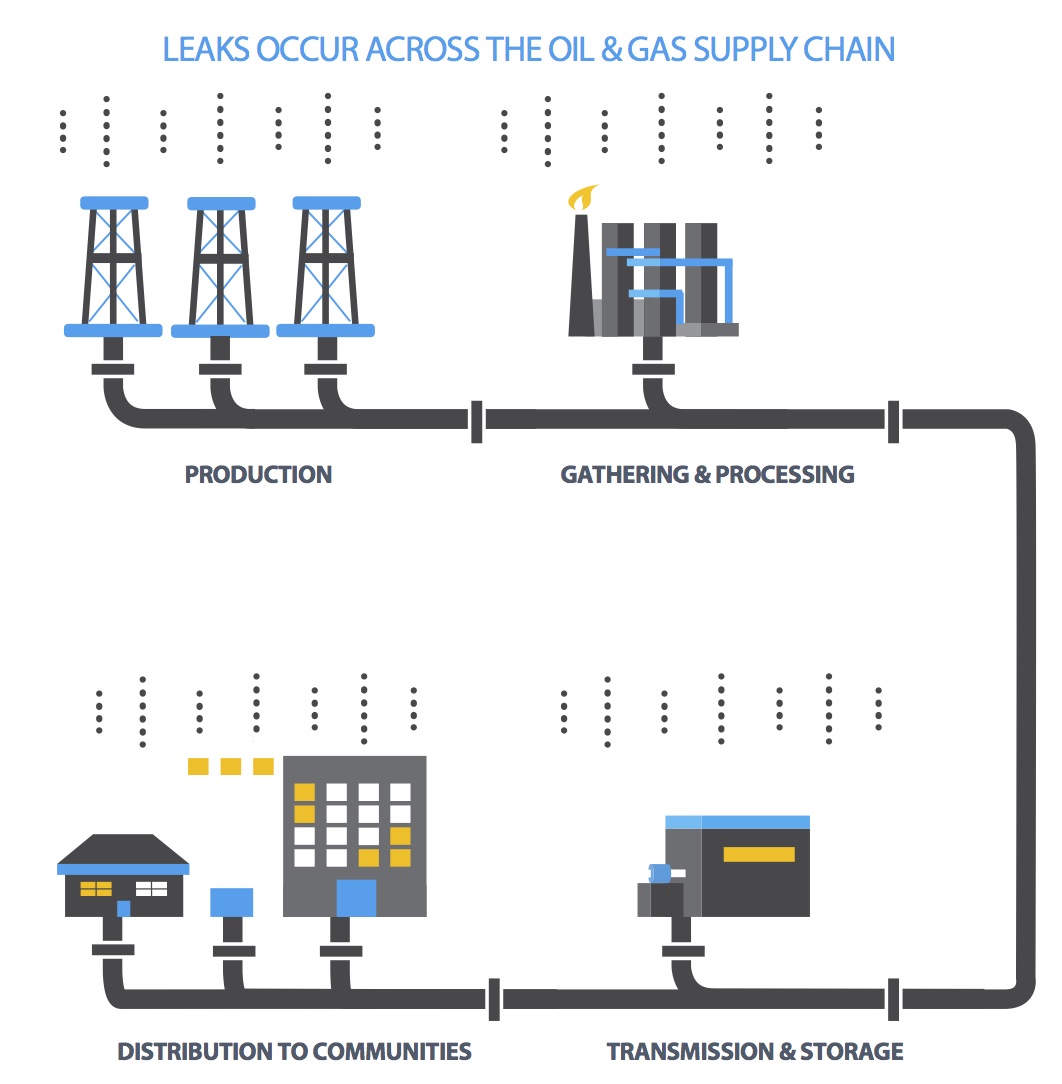
Photo: Roberta Franchuk, Pembina Institute
The recent North American Leaders’ Summit saw a significant step forward for methane reductions. Taking a continental approach to climate action, Mexico signed on to Canada and the U.S.’s previous agreement of achieving 45 per cent methane reductions by 2025.
This kind of strong action on methane is something the Pembina Institute has been working towards for a long time. Now that the targets are in place, how do we reach that goal? The answer is easily, cheaply and quickly — if industry and government move forward soon with the right decisions. Making improvements to oil and gas equipment and facilities that leak or release methane is easy and cheap, and would enable the oil and gas sector to contribute their share in reducing Canada’s greenhouse gas emissions. As pointed out in a recent CBC article, attention now needs to turn towards regulations.
Why is tackling methane important?
Methane is the primary component of natural gas and if it is allowed to leak into the air before being used—from a leaky pipe, for instance—it absorbs the sun’s heat, warming the atmosphere. For this reason, it’s considered a greenhouse gas, like carbon dioxide.

Although methane doesn’t linger as long in the atmosphere as carbon dioxide, it is initially far more damaging to the climate because of how effectively it absorbs heat.
While methane can come from many sources, both natural and manmade, the largest source of industrial emissions are from the oil and gas industry. According to a study we commissioned from ICF International, a 45 per cent reduction of methane emissions from the oil and gas sector would be the equivalent of not emitting 27 million tonnes of CO2. These reductions alone would get us over 10 per cent of the way towards achieving Canada’s climate commitments made in Paris.
Methane reductions are easy
One of the most remarkable things about taking action on methane emissions is the simplicity. There are already inexpensive, proven technologies that are easy to implement and don’t require industry to radically change its field practices.
In some cases, these fixes are as easy as tightening loose valves and repairing leaky equipment found while conducting routine inspections. Effective leak detection and repair programs are among the most inexpensive strategies to consider and can reduce over a third of North America’s oil and gas methane emissions. Such inspections and repair programs are part of good operating practices that some leading companies already use, but industry-wide implementation is needed to reach the full reduction potential.
Methane reductions are cheap
Because of the value of the gas that is conserved, some of these reduction measures could potentially increase revenue (e.g. reduce lost product), or have limited net cost. According to the ICF study, on average, reductions would cost $2.76 per tonne of CO2e reduced or $1.33 per MCF (1,000 cubic feet of natural gas).
To put that in perspective, methane reduction costs are lower than carbon capture and storage — a technology the oil and gas sector has favoured — at $72 per tonne (the cost for Shell’s Quest CCS project in Alberta). It’s even lower than Alberta’s current carbon price of $20 per tonne or the eventual price of $30 per tonne. Clearly, methane reductions are in fact one of the cheapest options to reduce greenhouse gas emissions in the entire economy.
Where we go from here
As the CBC article correctly points out, measurement and reporting of methane emissions is a considerable challenge. The trick will be in creating regulations that create the motivation and incentive for industry to accurately measure and report on their methane emissions, and to create a transparent and accountable system so that progress towards reducing methane emissions can be clearly tracked.
Now is the time for industry, government and ENGOs to roll up our collective sleeves and get down to work to create a system that achieves the significant reductions that are possible with low-cost, proven technologies. The North American methane reduction commitment demonstrated strong leadership to the world — let’s continue to chart a clear path forward on how to turn talk into reductions.
Duncan was Alberta regional director of the Pembina Institute until 2019.



